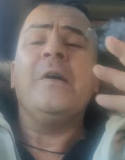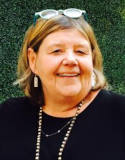The $188,000-Dollar Bill….What Happened to Binion’s Horseshoe’s Famous Million-Dollar Collection?

When the history of Binion’s Horseshoe does get written, it shall likely be noted that the removal of the famous tourist attraction was one of several nails in the coffin of gambling’s most legendary institutions.
Who would spend $188,000 on something that’s worth only $10,000 at face value?
An anonymous bidder at a Florida auction house recently purchased one of the rarest novelties of United States currency that’s ever been minted. Only about 300 of these so-called “bearer banknotes” are known to exist. They are so rare that most people probably wouldn’t be able to identify the face on the bill. Yet, there’s a good chance many of you reading this article have seen and even stood alongside one-hundred of these banknotes in pristine condition, unaware that collection represented about one-third of all such bills in the world. You may gave even had your photo taken with this one, which was sold. Although they do remain legal tender, the U.S. Treasury Department began pulling the banknotes from circulation in 1969. What remains out there has been snapped up by collectors. That’s what makes them so rare.
The portrait on the $10,000 bill shows Salmon P. Chase. He had the extraordinary distinction of serving as Governor of Ohio, U.S. Senator, and later — Chief Justice of the Supreme Court. But his vital role as Secretary of the Treasury under President Lincoln during the American Civil War arguably became his most lasting legacy. Chase established a national banking system and was the first Treasury Secretary to issue paper currency. A little known fact: The very first portrait on the $1 bill, initially issued in 1862, belonged to Chase — not George Washington. Another surprising fact: Chase was personally responsible for placing the phrase “In God We Trust“ on most U.S. coins and currency.
Chase’s name and influence remain very much with us, even to this day. Now, there’s a Chase Bank in just about every business district in America. The mega-bank many uses to conduct our financial transactions was initially created in 1877. It was named in honor of Salmon P. Chase.
Oddly enough, exactly one-hundred years after Chase’s departure from his U.S. Treasury post, his portrait emerged once again in the strangest of places. Binion’s Horseshoe, long regarded as a throwback to the Wild West when gambling was the staple of saloons, debuted a tourist attraction that would eventually draw more than five million visitors over the next 34 years. The one-of-a-kind display would become one of the most popular tourist destinations in the history of Las Vegas.
In 1964, Benny Binion brought back a novelty that had once endeared his Horseshoe casino to many. Years earlier, between 1954-1959, Joe W. Brown (who owned the Horseshoe while the elder Binion was serving time in Leavenworth federal prison for tax evasion) had set up a display of one-hundred $10,000 bills in mint condition and in perfect sequence. However, the display was later deemed too costly to maintain and lost a considerable amount in interest, combined with inflation, and was discontinued. Binion’s decision to re-introduce the famous “Million Dollar Display” five years later proved to be a stroke of genius. A trip to Las Vegas wasn’t complete without heading downtown and getting a free picture with the million-dollar display to show the folks back home. Generations flowed into the casino, more than making up for the operating expenses and lost interest by often dropping a few dollars in the slots or at the tables while waiting for the photo to be developed (it always seemed to take a little longer than one expected — wonder why?). Among the millions of “tourists” who got their picture taken with the one-hundred $10,000 banknotes was none other than crazed murder Charles Manson, once posing proudly with members of his “family” with the money on his only known trip to Las Vegas. The FBI later reportedly found one of the Horseshoe’s famous free photos with Manson’s possessions when he was arrested.

Benny Binion and daughter Becky pose in front of the famed “Million Dollar Display” sometime during the 1960s
When the Binion family got into a bitter squabble and ultimately split apart in 1998 (I didn’t start working for Jack Binion until 2000, and later Becky Binion-Behnen in 2002 — by that time the money was long gone from the premises), the million-dollar display became an expendable asset. It was sold and carted off to a coin dealer at an undisclosed price, estimated by some in the know at about four-times its face value, everyone involved in the transaction acutely aware of the banknotes’ unprecedented rarity. When the history of Binion’s Horseshoe does get written, it shall likely be noted that the removal of the famous tourist attraction was one of several nails in the coffin of gambling’s most legendary institutions.
This brings us back to 1/100th of the former display, the $10,000 bill that’s just been sold for 18 times its face value at the auction in Florida. According to a recent article in the Las Vegas Review-Journal, these bills still occasionally surface in everyday banking transactions. Shockingly, some bearers are completely unaware of their actual value as rare collectibles. According to the article, “….not everyone who has one is aware of its true value….about once a year he gets a call from a bank where some poor sap has just deposited a $5,000 or $10,000 bill instead of offering it for sale to collectors. That can be an expensive mistake. In 2015, a banner year for the Binion’s banknotes, four were auctioned in separate sales that fetched between $112,500 and $188,000.”
Hence, the once-famous currency collection has been carved up, spit apart, and is unlikely ever again to see the light of day as a complete unit. Inspired by the previous success and a master of promotions, Jack Binion later created his own version of the million-dollar display when he first opened up his Horseshoe Casino in Bossier City, Louisiana. The grand entrance along the hallway remains wallpapered with ten-thousand $100 bills, undoubtedly the biggest collection of Ben Franklin portraits ever assembled in one place. It’s certainly impressive. Then again, it’s not quite the original.
Binion’s Casino also has a modern reincarnation of the original display, where tourists can stop in and get their picture taken with what’s said to be $1,000,000 in cash. Although the owners undoubtedly have the best of intentions in mind and should be commended for trying to continue a popular legacy with what is admittedly limited resources and a lack of any real connection to the old days when the actual Binion Family ran one of the most famous gambling joints in the world, the display seems to lack the “wow” factor that once characterized the old display with so many rare bills of U.S. currency assembled in one place.
When it was sold off 16 years ago, Horseshoe matriarch Becky Binion-Behnen admitted that a million dollars just doesn’t have the same mystique that it once did. Since that time, it’s diminished even further. Dozens of lottery winners now collect prizes in excess of $1 million each and every week. And, there are dozens of poker tournaments with $1 million or more awarded in first-place money held every year, the richest of which — the World Series of Poker Main Event — usually has a top prize of $8 million (the first Big One for One Drop awarded $18 million).
Perhaps this is what makes the $10,000 banknote with the portrait of Salmon P. Chase now so valuable. It’s why the latest rare find at a public auction can fetch many more times what it was initially worth. Some things are indeed more valuable than money — and that includes money with a revered history, the likes of which we shall not witness again.
READ: Horseshoe Closes

Photo Credit: Photo with Benny Binion and Becky Binion-Behnen courtesy of UNLV Special Collections.













As late as the late 1950’s, each time a bill of $1,000 or greater changed hands, the transaction had to be reported to the Treasury, complete with the serial number of the bill(s) involved and the names of the parties exchanging them. I don’t know whether or not today’s $10K reporting limit has replaced this or not, but so few large bills change hands these days (even between collectors) that it wouldn’t provide very much information.
Minor quibble. “In God We Trust” was put on currency in 1957. Decades after Chase was dead and buried.
Nolan Replies:
Indeed, the phrase appeared on currency in 1957, as you noted. However, the phrase was first used on coinage during the 1860’s, according to this link: CLICK HERE
— ND
They should upgrade to a one billion dollar display!
http://artisticthings.com/one-billion-dollars/
Pretty sure Binion’s associate who ran the joint while he was in prison was Joe W. Brown, not John. John Brown came earlier and was famous for a different reason. 🙂
Nolan Replies: Correction noted, and made. Thank you.
— ND
I worked there for several years.Hired to deal poker tournaments in 1997 off and on.I was a full time poker dealer there from 2000 thru the day they locked the doors in January 2004.I still occasionally walk thru the place.However it’s not the same(nowhere close)and never will be.I miss the Horseshoe a lot.Sad Las Vegas has turned into the corporate POS it has.
“Among the millions of “tourists” who got their picture taken with the one-hundred $10,000 banknotes was none other than crazed murder Charles Manson, once posing proudly with members of his “family” with the money on his only known trip to Las Vegas. The FBI later reportedly found one of the Horseshoe’s famous free photos with Manson’s possessions when he was arrested.”
Do you have a source for this statement?
Nolan Replies:
It was cited in the Las Vegas Sun, about ten years ago. Link: http://lasvegassun.com/news/2000/jan/20/horseshoe-retires-1-million-display/
— ND
Thank you for the prompt and informative response!
starviego
I was fortunate enough to the $1,ooo,ooo display sometime in April 1969. I had just completed tech school and was on my way to my first duty assignment in Tonopah, NV. Since I had time to kill waiting for my bus, I decided to “walk the strip” down Fremont and stopped in at Binion’s Horseshoe.
Hello Nolan.
Would you have a business contact phone number or e-mail address for Jack Binion? Becky (his sister) told us Jack would have first-hand knowledge about what happened with that Charles Manson photo. She heard the photo was confiscated at the Horseshoe by either the FBI or local law enforcement. Thanks for you help. Paul Hart (Helping author Tom O’Neill.)
Paulhart2@aol.com